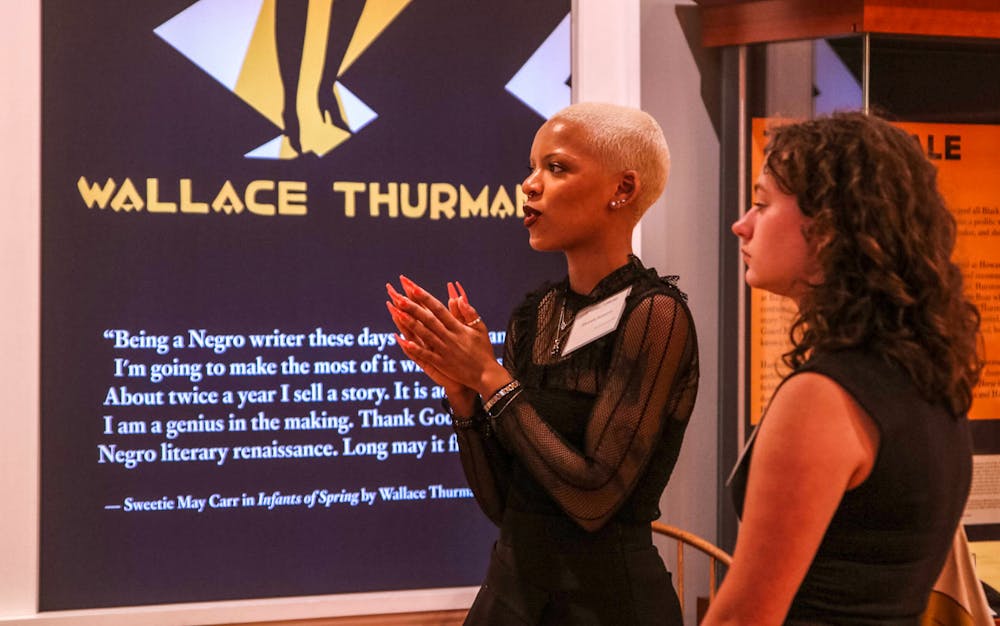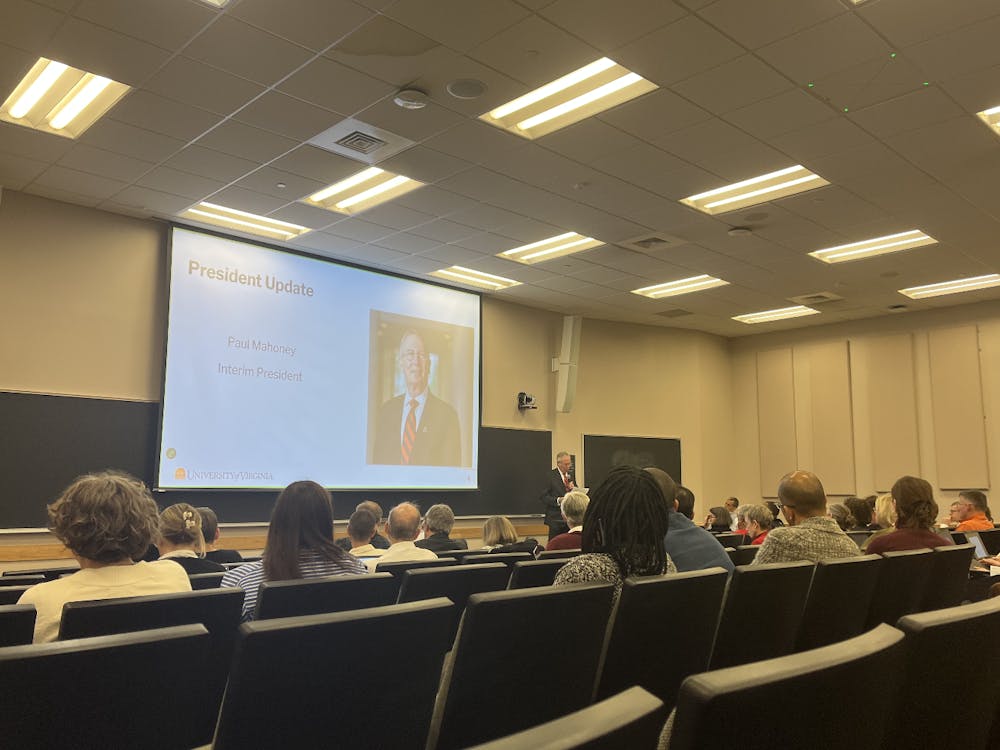In the summer of 1919, America was wrought with racial violence. As Black troops returned from World War I, white mobs attacked Black people in a host of major cities across the country. What grew out of the horrors of that summer was a literary, artistic and political movement unlike any other — the Harlem Renaissance.
At the Albert and Shirley Small Special Collections Library, a curated collection of images, art and documents paints a picture of the legacy of the Harlem Renaissance. The library’s newest exhibition, “Their World As Big As They Made It: Looking Back at the Harlem Renaissance” brings the life and ardor of the Harlem Renaissance to Grounds.
According to Krystal Appiah, the head of collections development at Special Collections, their existing collections were ripe with material to illustrate the movement. The existing collection included novels, poetry collections and anthologies from the period that illustrate the vast literary and artistic contributions of the Harlem Renaissance.
“As we dug in our catalog and searched the stacks, we were pleased to find original issues of the three major periodicals — ‘The Crisis,’ ‘The Messenger’ and ‘Opportunity’ — which allowed us to tell a story about the political and ideological environment as well,” Appiah said.
Visitors walking into the library’s exhibition room will find a brightly lit space filled with seemingly countless artifacts. Relics are organized by the historical figure or event they pertain to — each one signified by a colorful sign.
Each window is graced by a vibrant, translucent flag that boasts an excerpt from a famous Harlem Renaissance writer or activist. One flag features a red and blue reprint of the cover of Langston Hughes’s “The Weary Blues,” accompanied by a quote from the poem.
To English professor Lisa Woolfork — an artist featured in the exhibit — witnessing the primary sources that drove the Harlem Renaissance makes such history tangible and real. Woolfork notes the profundity of seeing such iconic works and moments materialized in person.
“To be able to see the first edition of W.E.B. Dubois’s ‘The Souls of Black Folk’ … that's it,” Woolfork said. “This is why the excitement of primary sources cannot be underestimated, and it makes me feel really excited that we have access to so much of Black literary history.”
In addition to documents of days gone by, the exhibition also features new works from Black artists that are in conversation with Harlem Renaissance literature. In addition to Woolfork, there are contributions by Black artists of today — Abreale Hopkins, Kemi Layeni, Tobiah Mundt and Valencia Robin. Each piece is displayed next to the poem from the Harlem Renaissance that inspired it.
One piece titled “Three Dark Girls, Loved,” by Woolfork, was based on a 1922 poem by Gwendolyn B. Bennett entitled “To A Dark Girl.” In the poem, Bennett praises a young Black girl for her dark features, while acknowledging the sadness that is held within them.
“I love you for your brownness, / And the rounded darkness of your breast,” Bennett writes to her subject.
According to Woolfork, these two lines at the beginning of the poem served as the main inspiration for her piece.
“[‘Three Dark Girls, Loved’] is a study of three Black girls — looking at them frozen in a state of innocence, in a state before anti-blackness would be something which they had to recognize, when they were in the joyous throes of childhood, where their imaginations are allowed to stretch and extend and grow,” Woolfork said.
Woolfork’s portrait features a fabric outline of three faceless young Black girls in frilly, lace-lined dresses. The group is posed over a backdrop of a repeating polaroid, presumably the one the fabric rendition is modeled after.
A black-and-white fabric with bouncing, shaded parabolas surrounds the portrait. Woolfork’s choice fabric is from a line created by designer e bond and inspired by Black women writers — the one featured in the piece was based on Zora Neale Hurston, an esteemed Harlem Renaissance novelist.
By including new pieces by contemporary artists, the exhibition emphasizes the ways in which the spirit of the Harlem Renaissance is still alive today.
In addition to showcasing the creative forces of the Harlem Renaissance, the exhibition also highlights the immense political activism that shaped the period.
“People often associate music and literary works with the Harlem Renaissance,” Appiah said. “I hope audiences learn how much political activism was also occurring during this era…Black Americans were lobbying for a federal anti-lynching bill, fighting segregation in schools and job sites and creating vibrant neighborhoods full of culture and Black-owned businesses.”
“Their World As Big As They Made It: Looking Back at the Harlem Renaissance” opens Sept. 13 with an event featuring food, live music and gallery talks.







